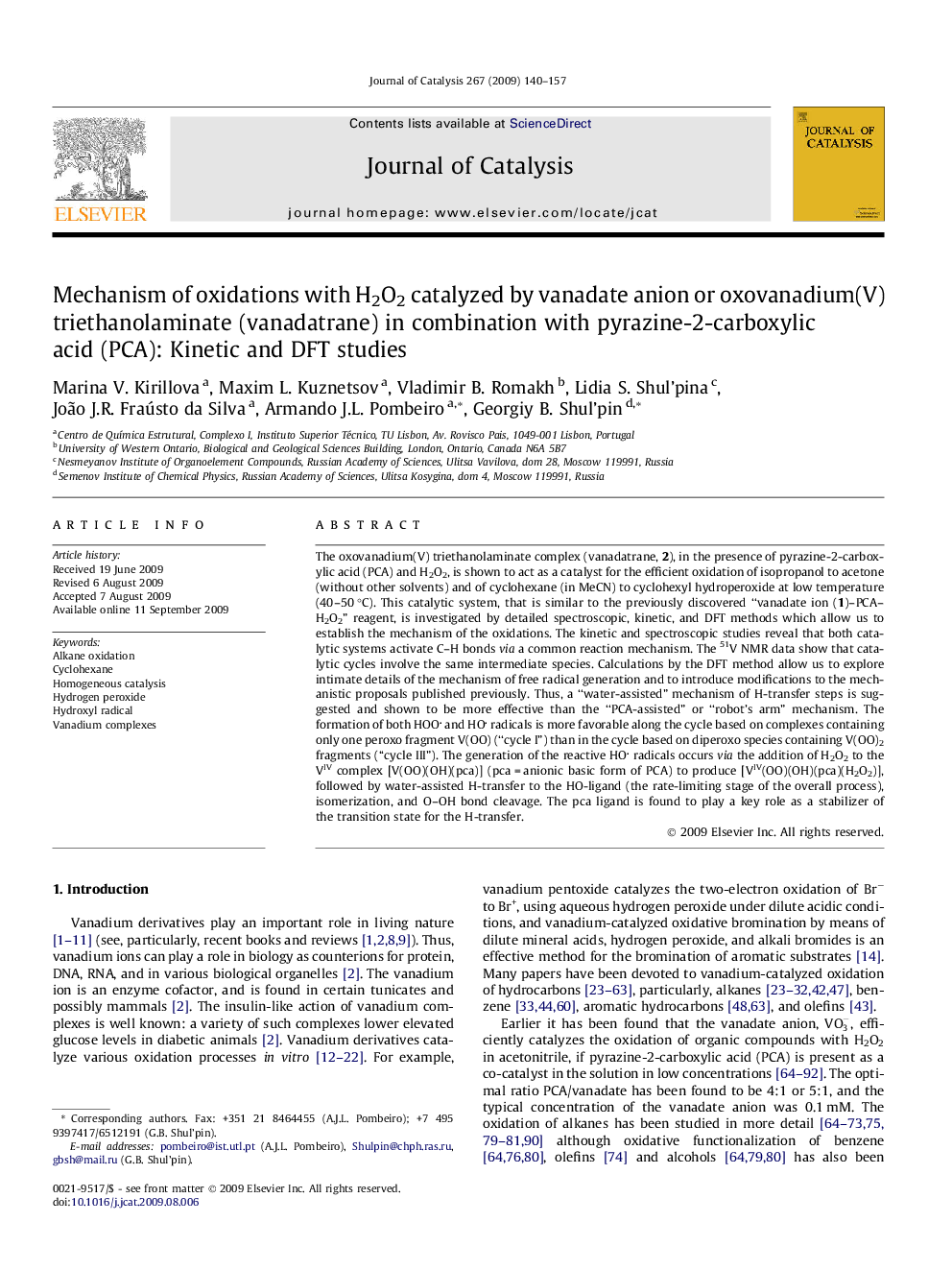| Article ID | Journal | Published Year | Pages | File Type |
|---|---|---|---|---|
| 62039 | Journal of Catalysis | 2009 | 18 Pages |
The oxovanadium(V) triethanolaminate complex (vanadatrane, 2), in the presence of pyrazine-2-carboxylic acid (PCA) and H2O2, is shown to act as a catalyst for the efficient oxidation of isopropanol to acetone (without other solvents) and of cyclohexane (in MeCN) to cyclohexyl hydroperoxide at low temperature (40–50 °C). This catalytic system, that is similar to the previously discovered “vanadate ion (1)–PCA–H2O2” reagent, is investigated by detailed spectroscopic, kinetic, and DFT methods which allow us to establish the mechanism of the oxidations. The kinetic and spectroscopic studies reveal that both catalytic systems activate C–H bonds via a common reaction mechanism. The 51V NMR data show that catalytic cycles involve the same intermediate species. Calculations by the DFT method allow us to explore intimate details of the mechanism of free radical generation and to introduce modifications to the mechanistic proposals published previously. Thus, a “water-assisted” mechanism of H-transfer steps is suggested and shown to be more effective than the “PCA-assisted” or “robot’s arm” mechanism. The formation of both HOO and HO radicals is more favorable along the cycle based on complexes containing only one peroxo fragment V(OO) (“cycle I”) than in the cycle based on diperoxo species containing V(OO)2 fragments (“cycle III”). The generation of the reactive HO radicals occurs via the addition of H2O2 to the VIV complex [V(OO)(OH)(pca)] (pca = anionic basic form of PCA) to produce [VIV(OO)(OH)(pca)(H2O2)], followed by water-assisted H-transfer to the HO-ligand (the rate-limiting stage of the overall process), isomerization, and O–OH bond cleavage. The pca ligand is found to play a key role as a stabilizer of the transition state for the H-transfer.
Graphical abstractSpectroscopic, kinetic, and DFT mechanistic studies of isopropanol oxidation (with H2O2) to acetone and of cyclohexane to cyclohexyl hydroperoxide, catalyzed by oxovanadium(V) species, in the presence of PCA, disclose details of free radical generation and an important role of water.Figure optionsDownload full-size imageDownload high-quality image (82 K)Download as PowerPoint slide
